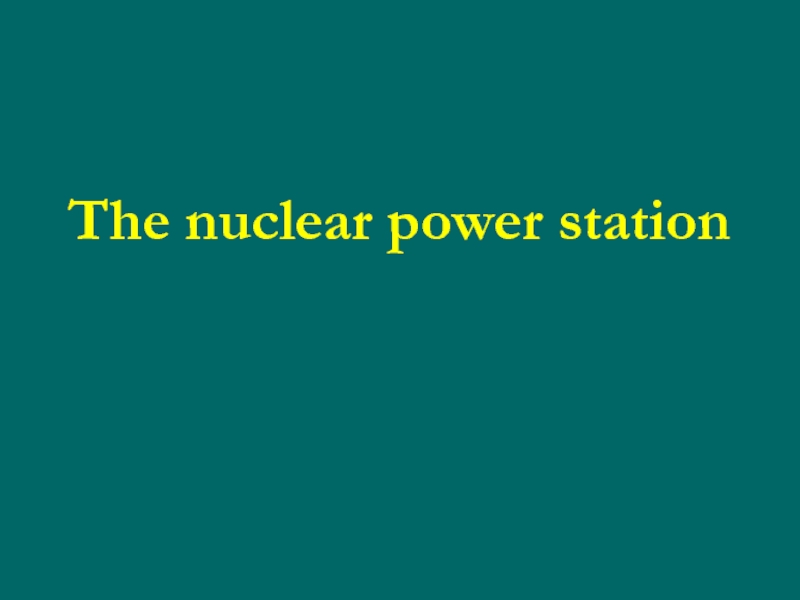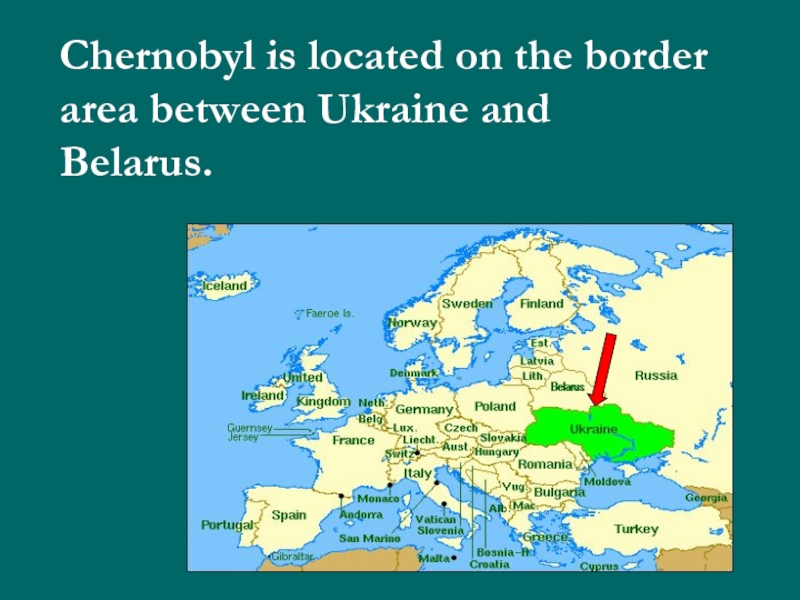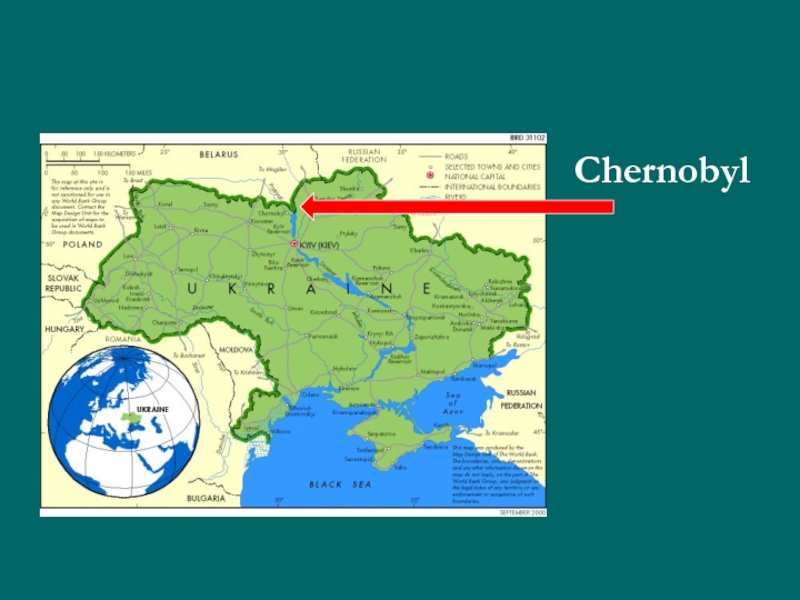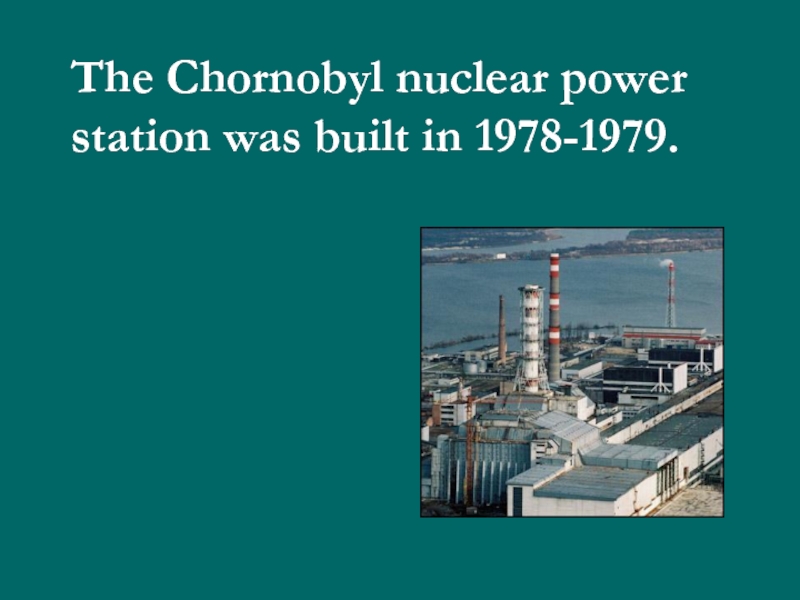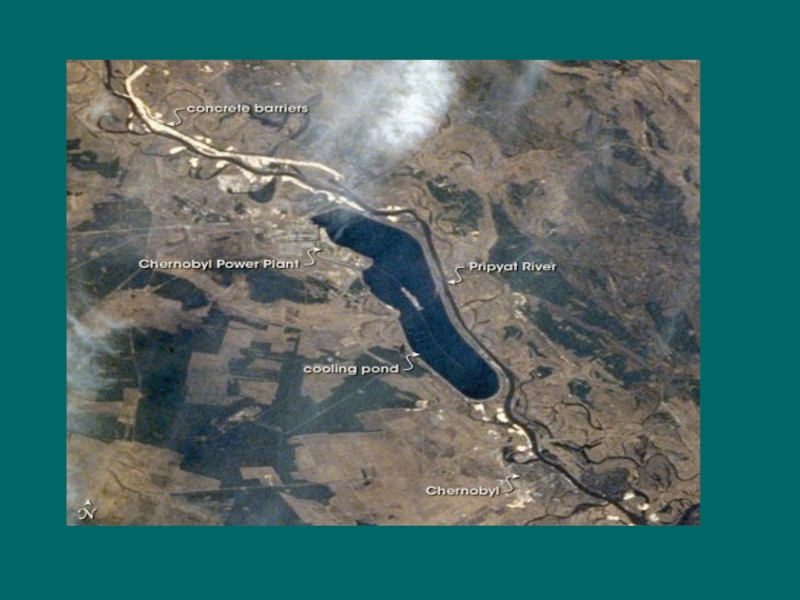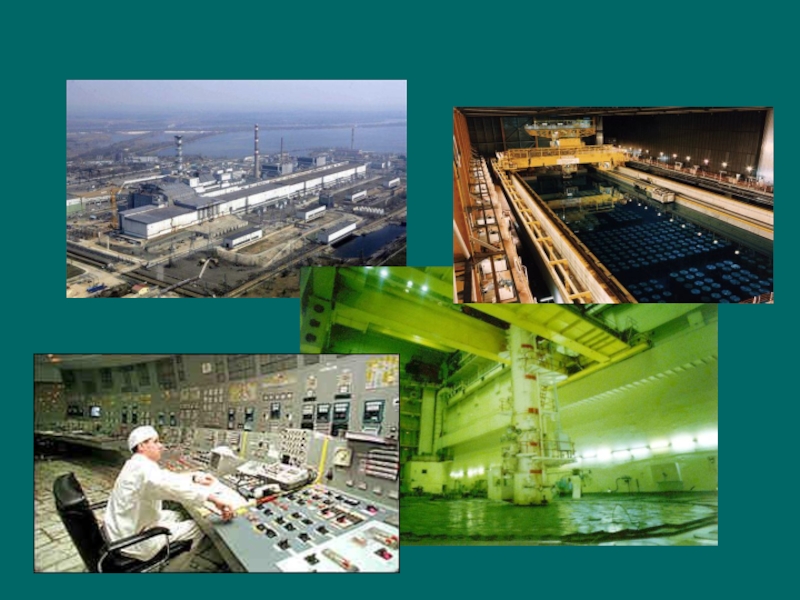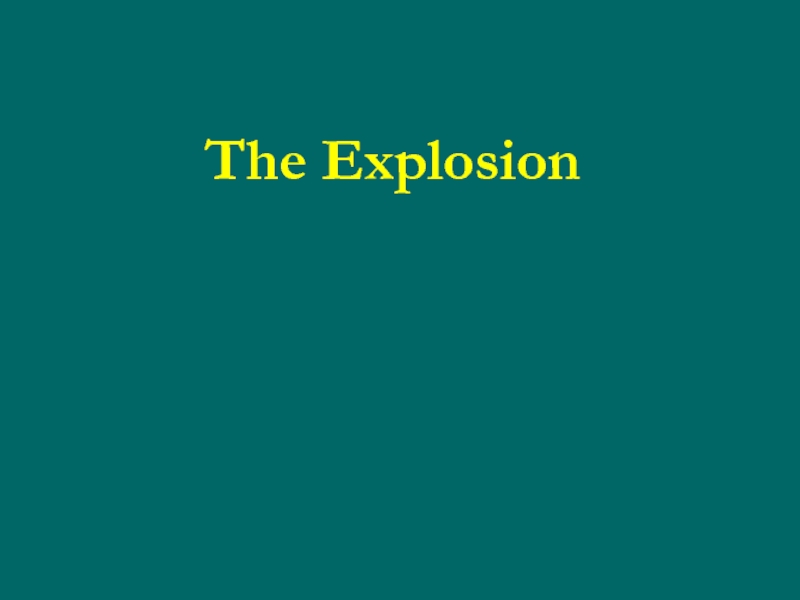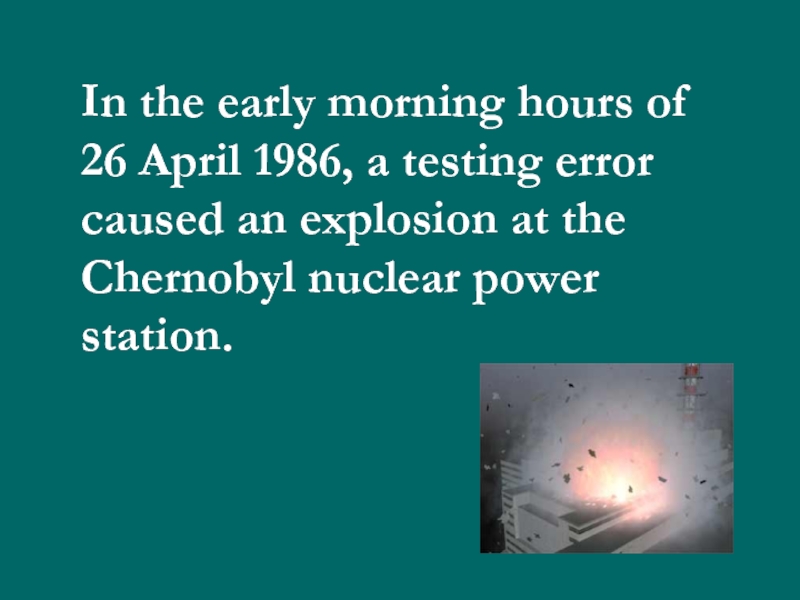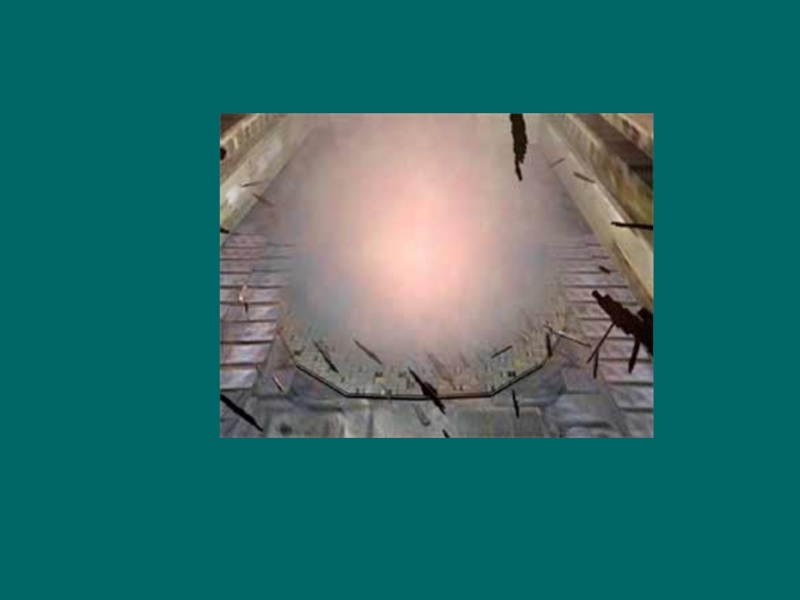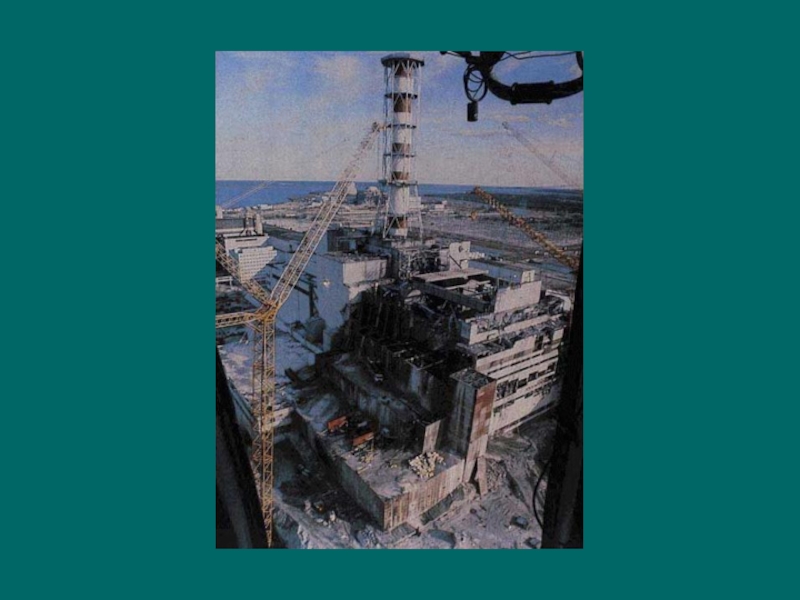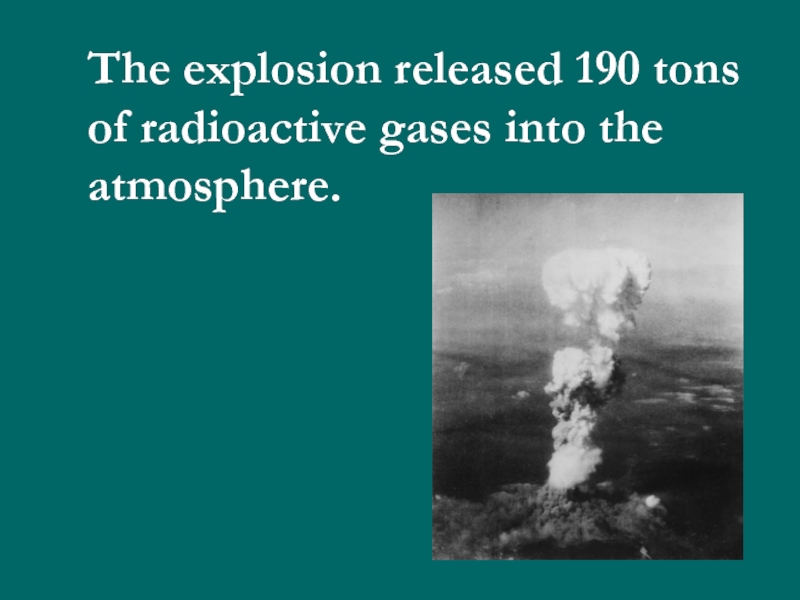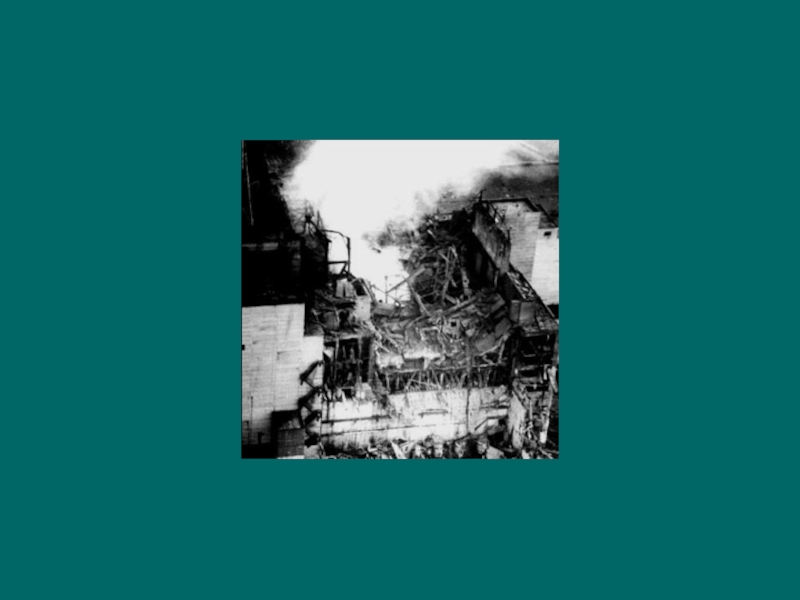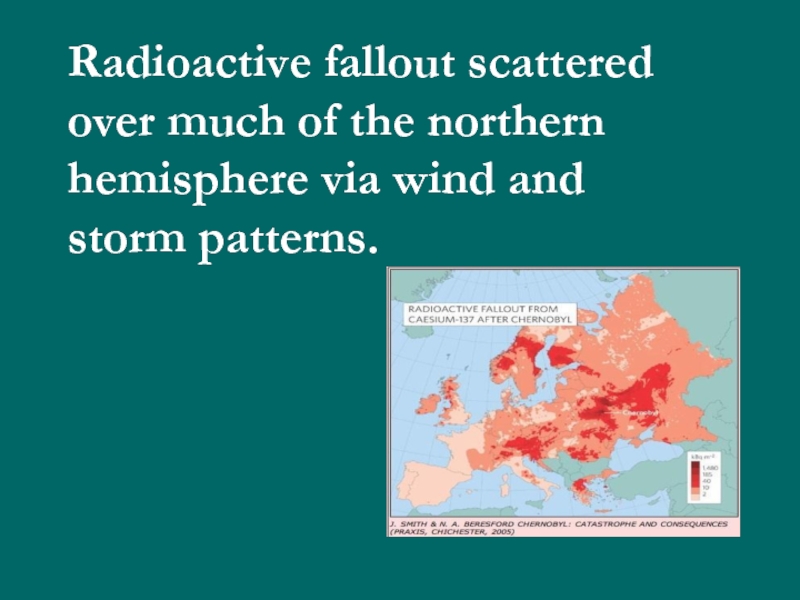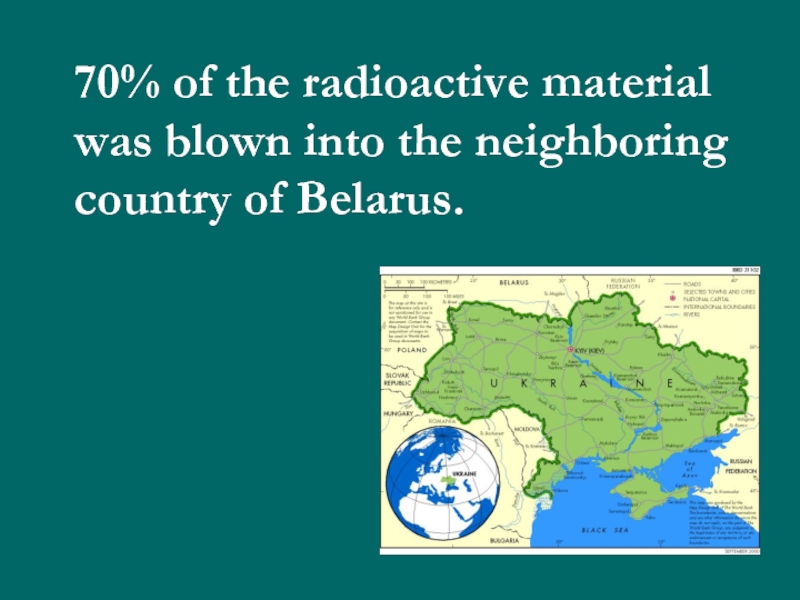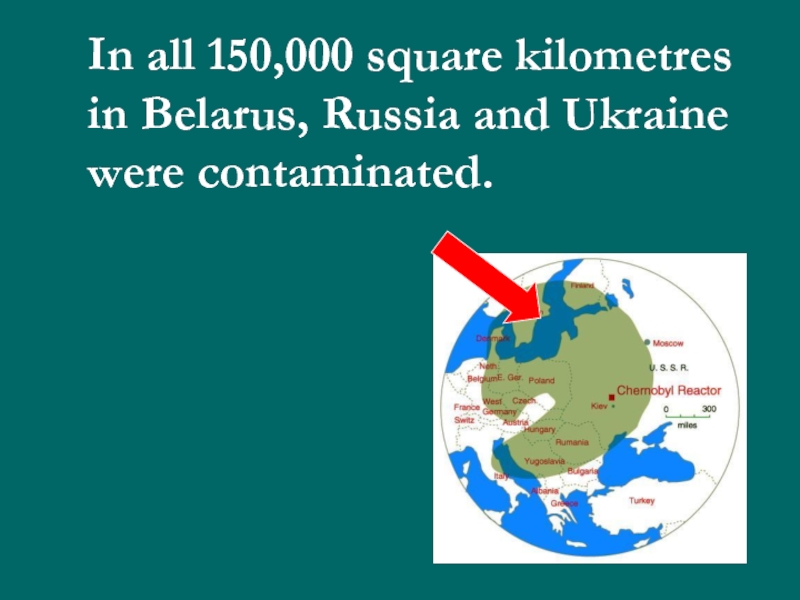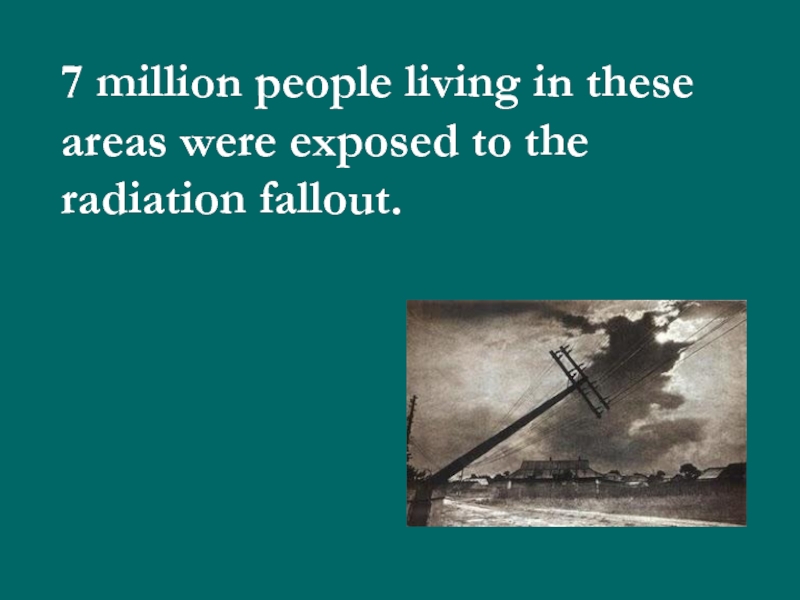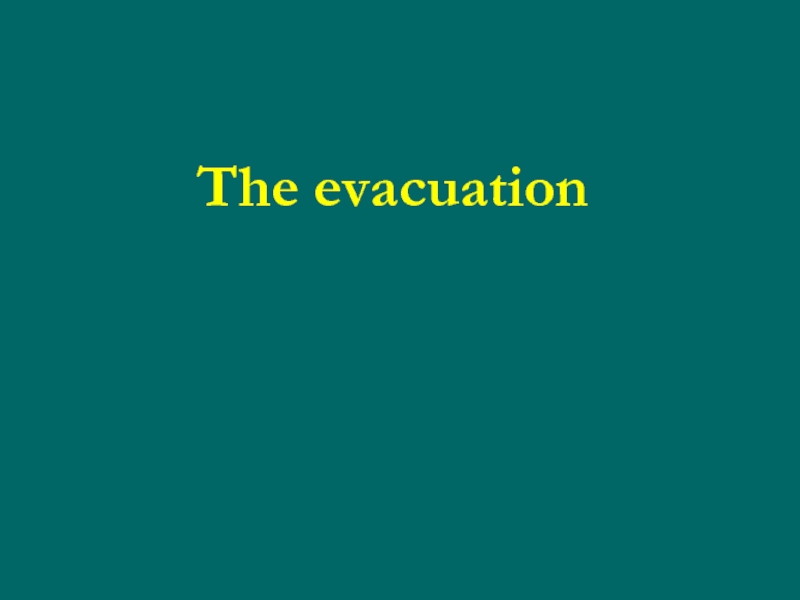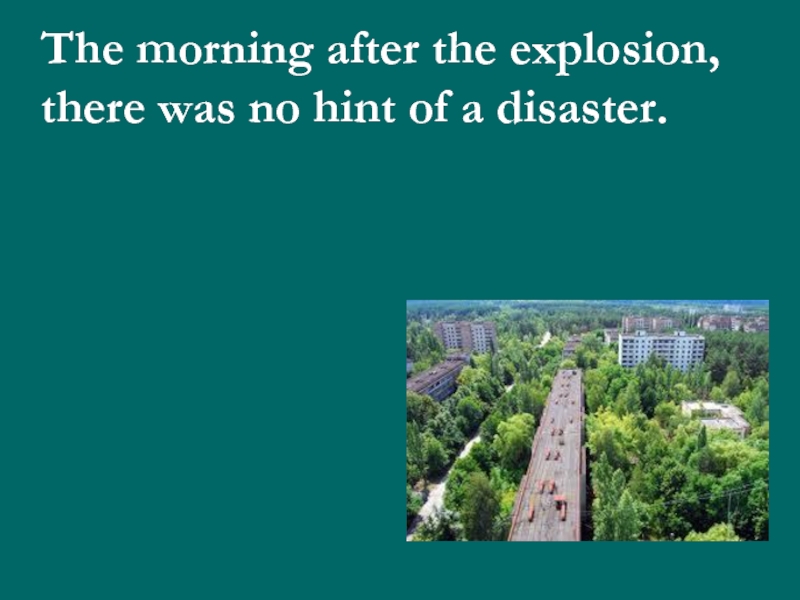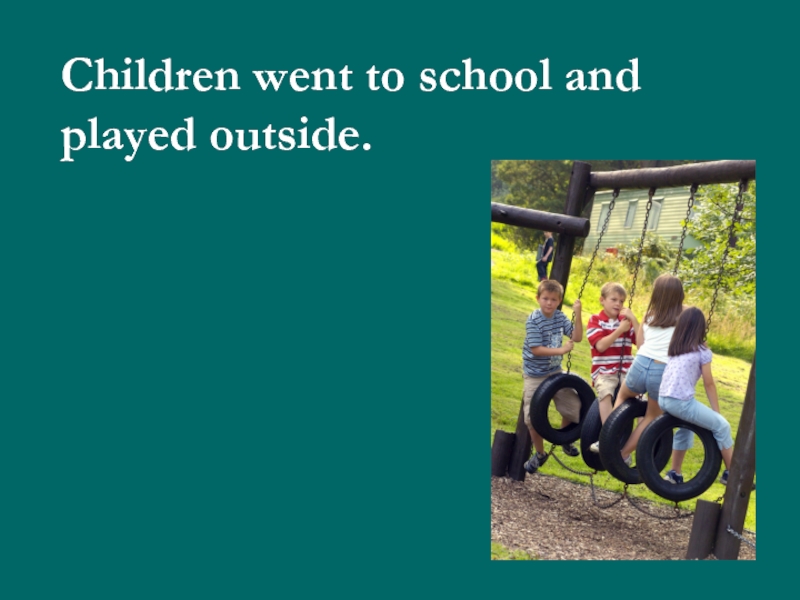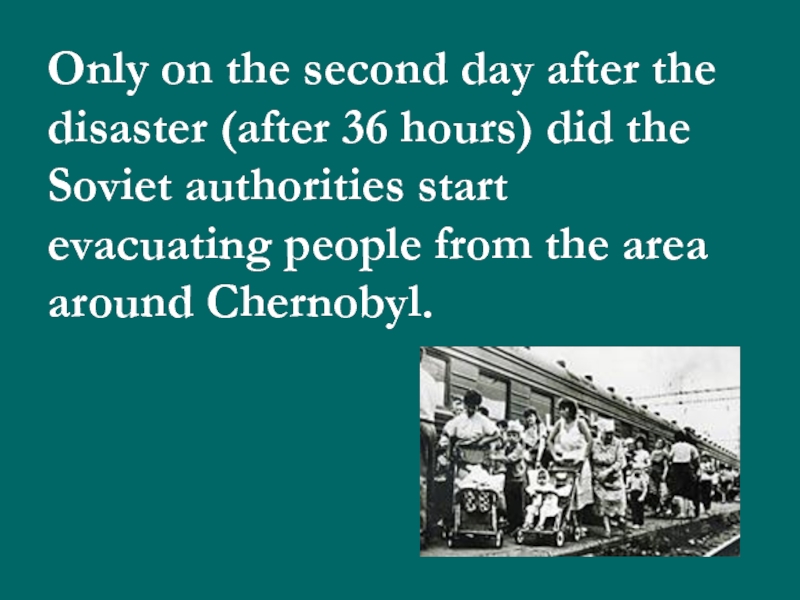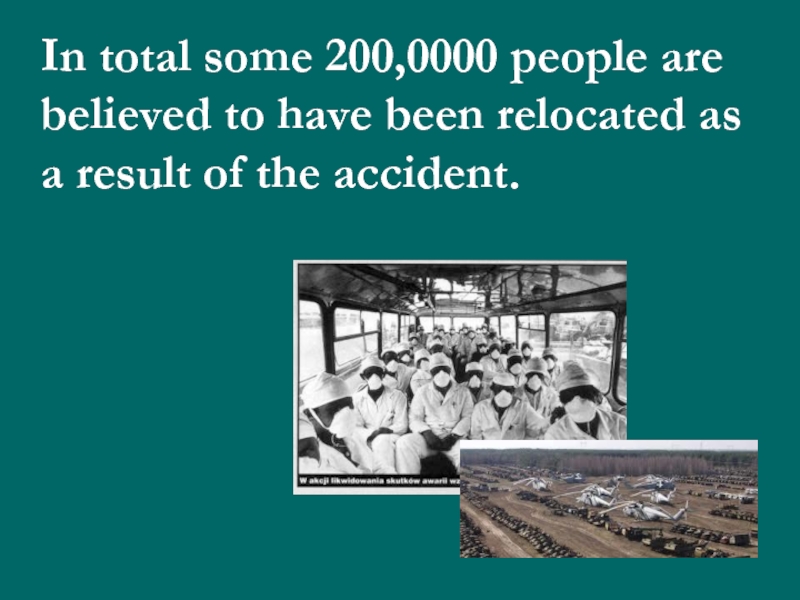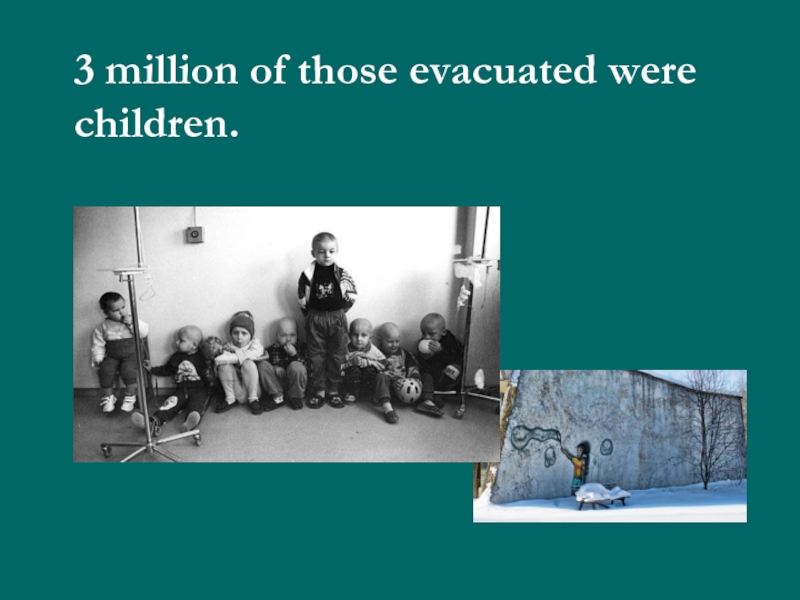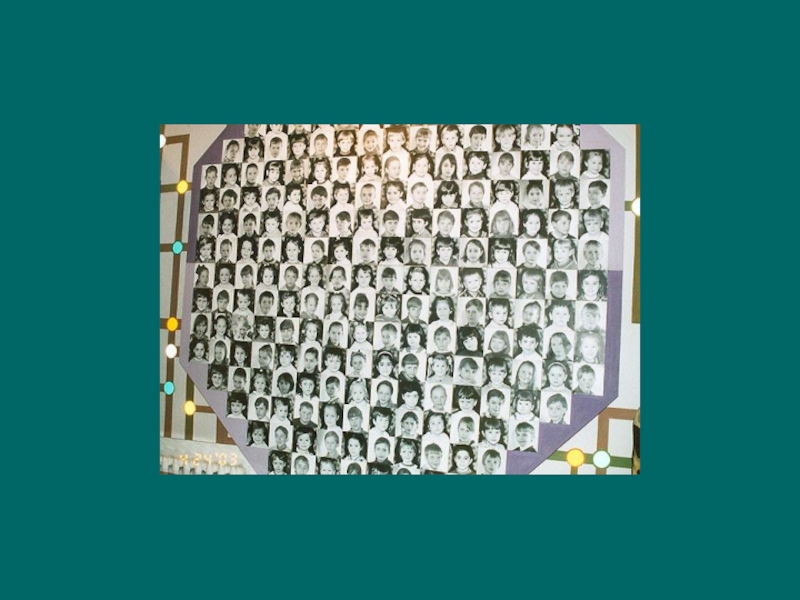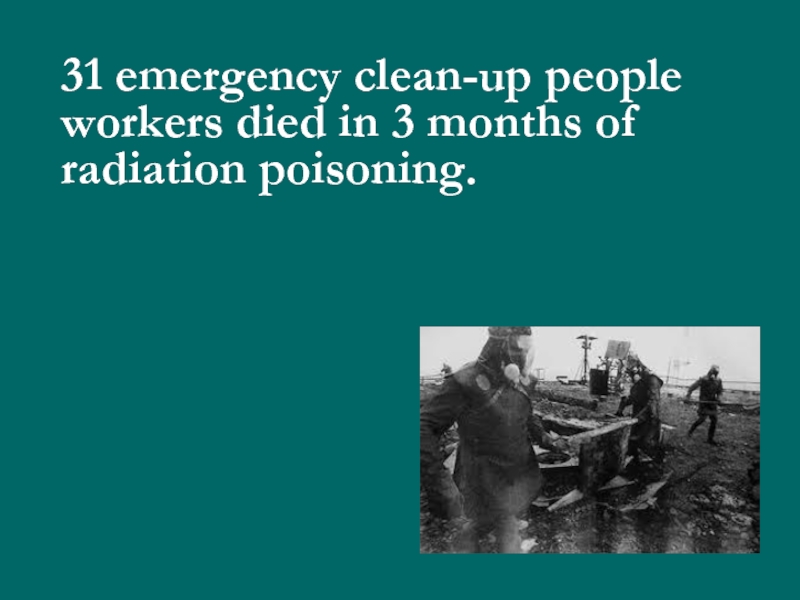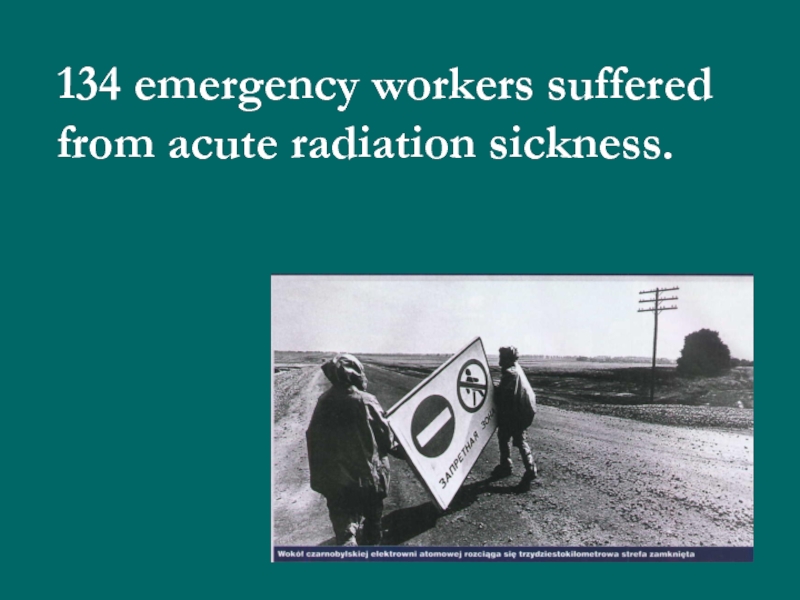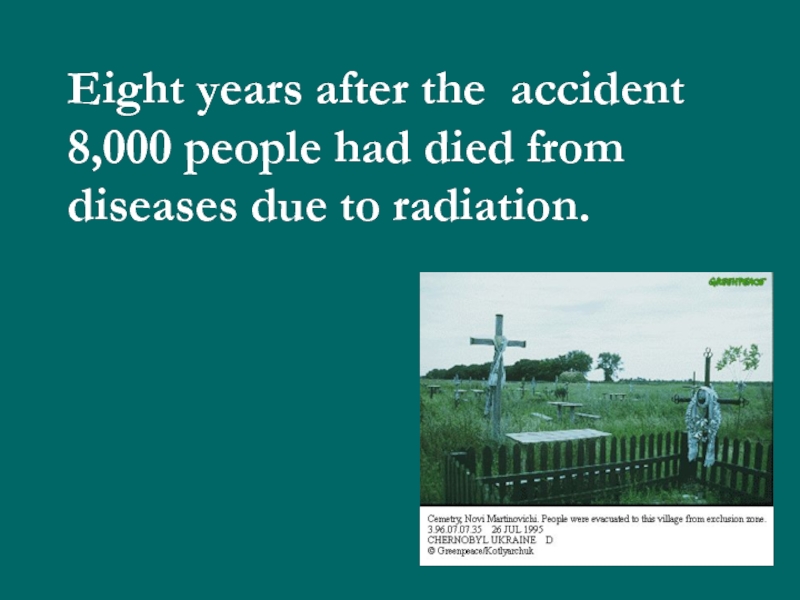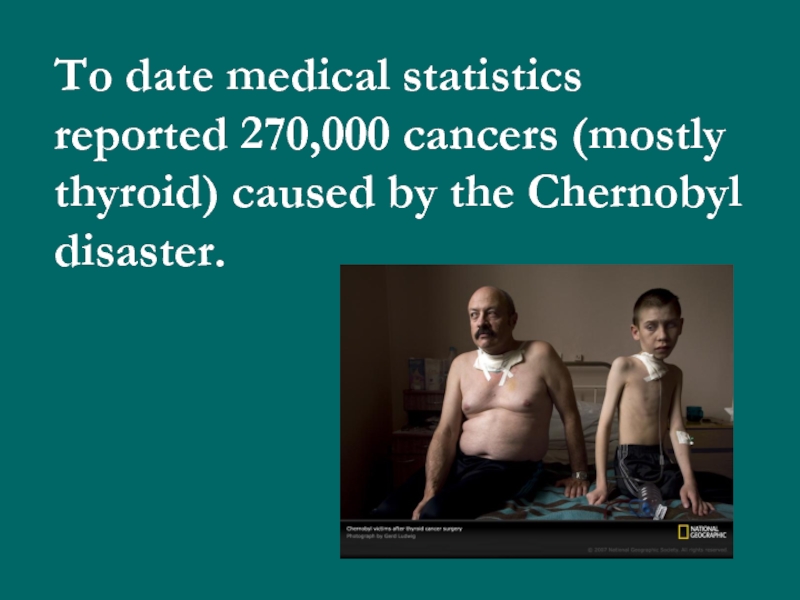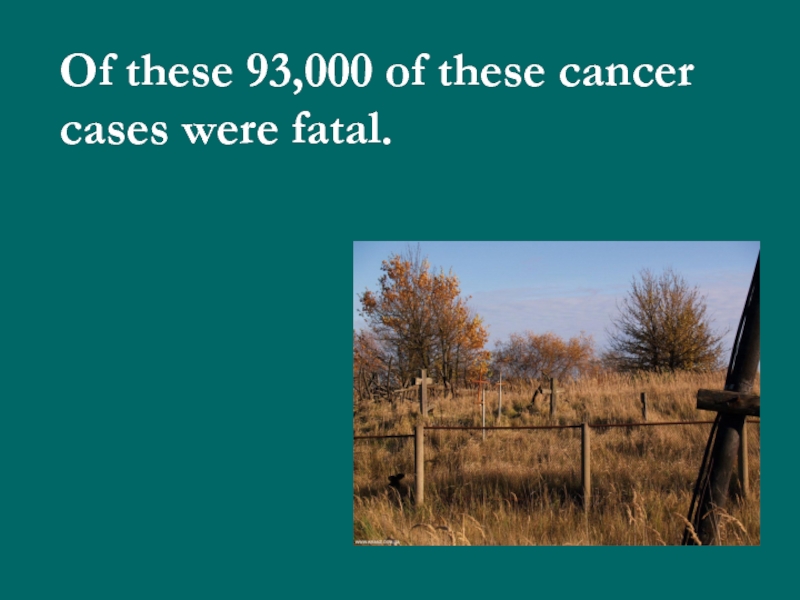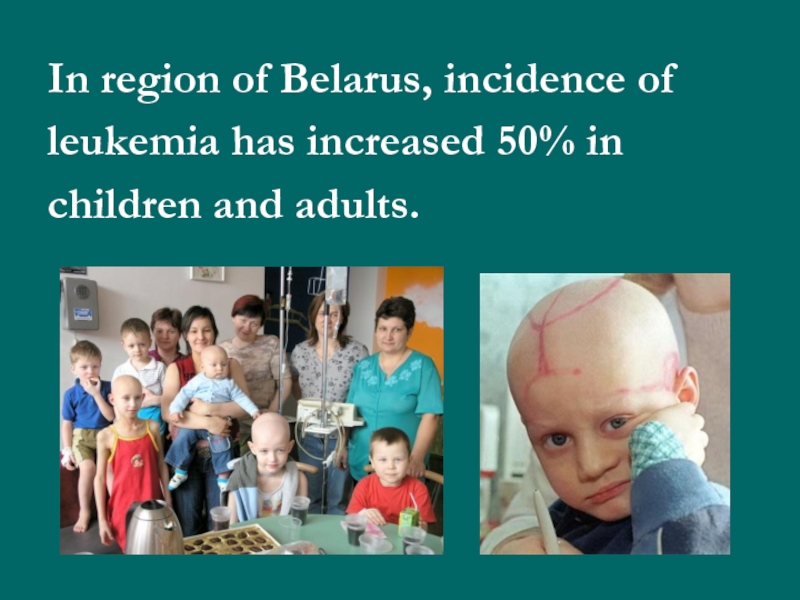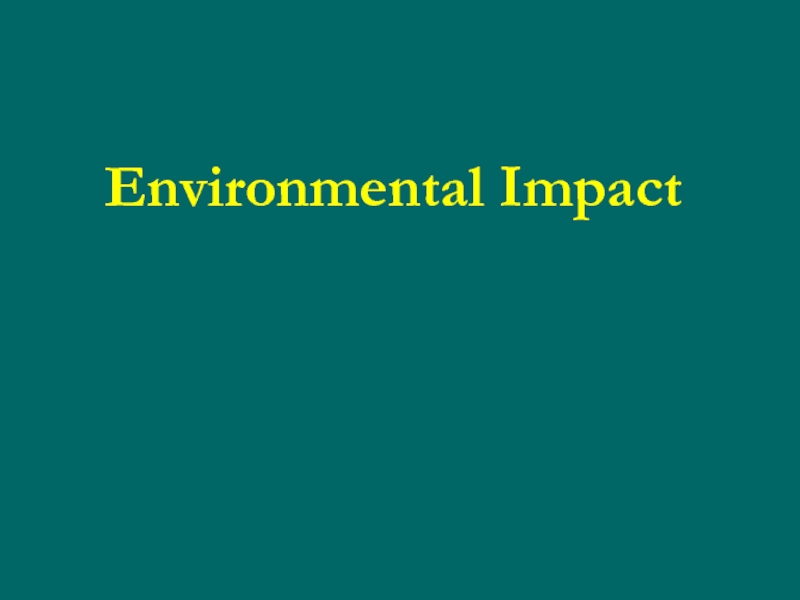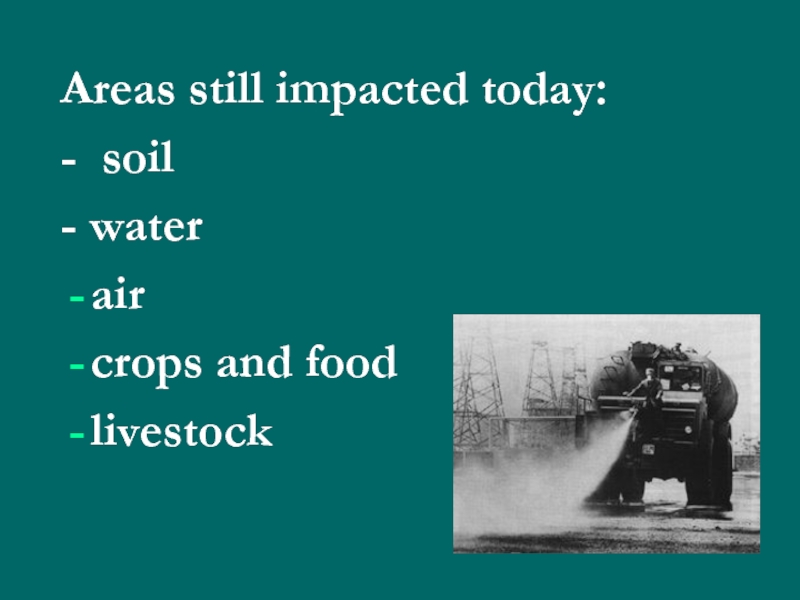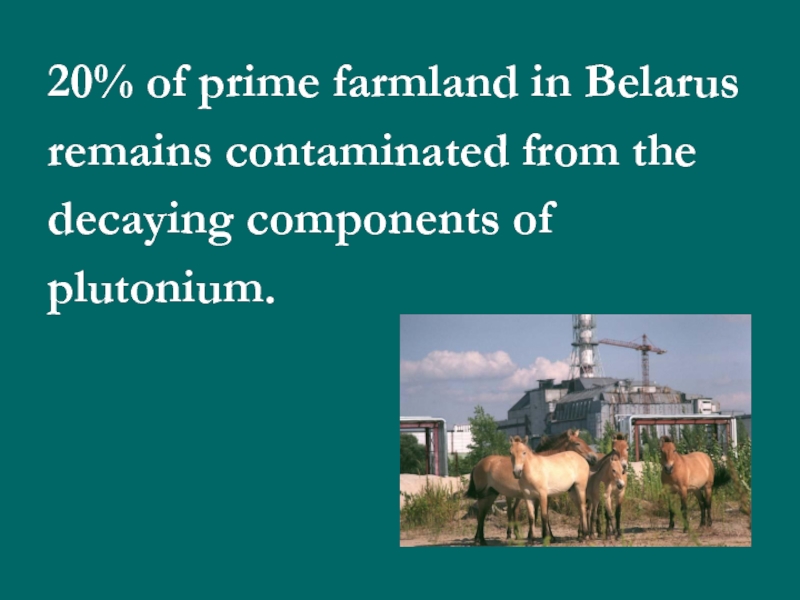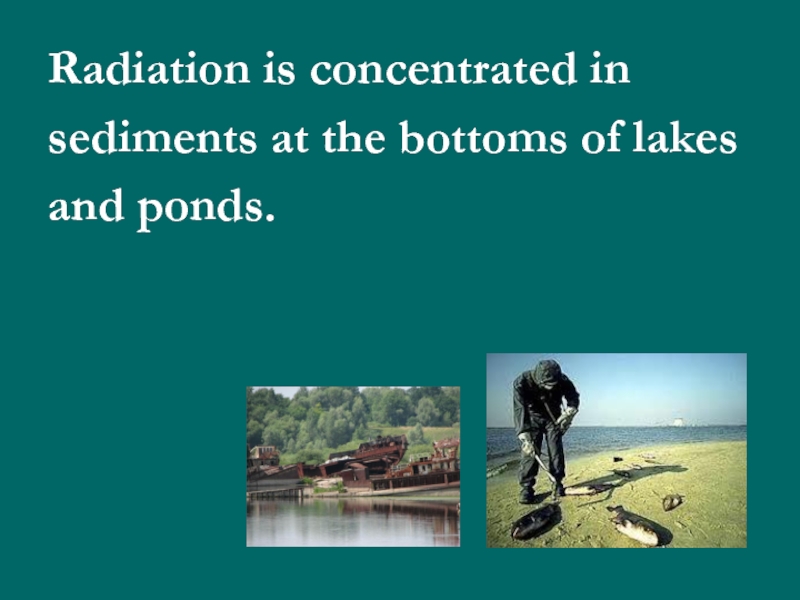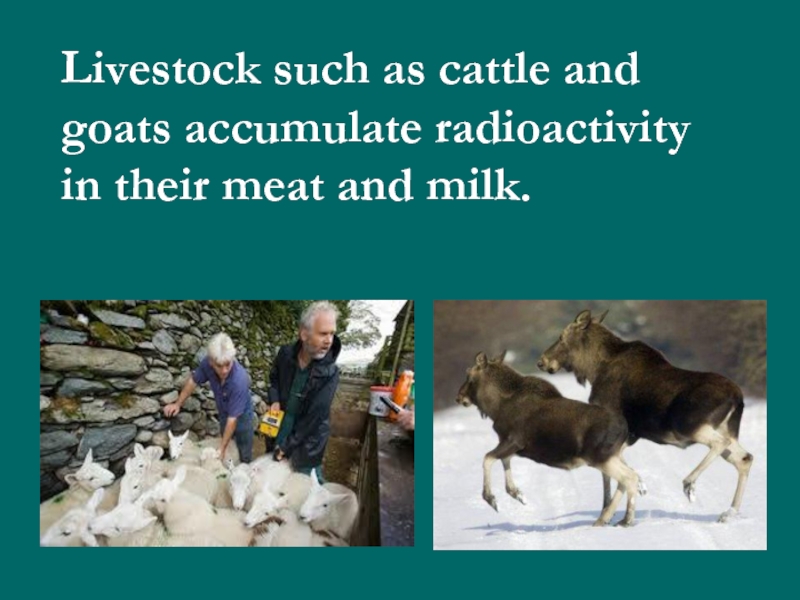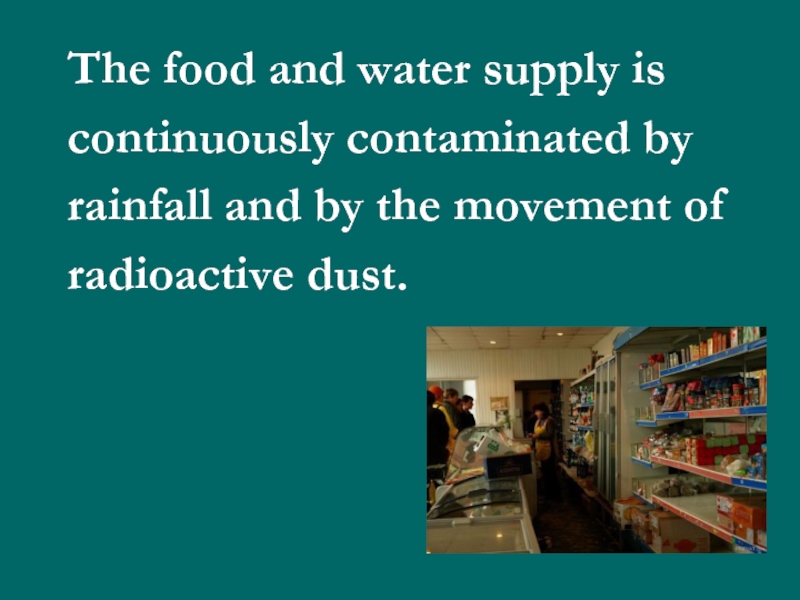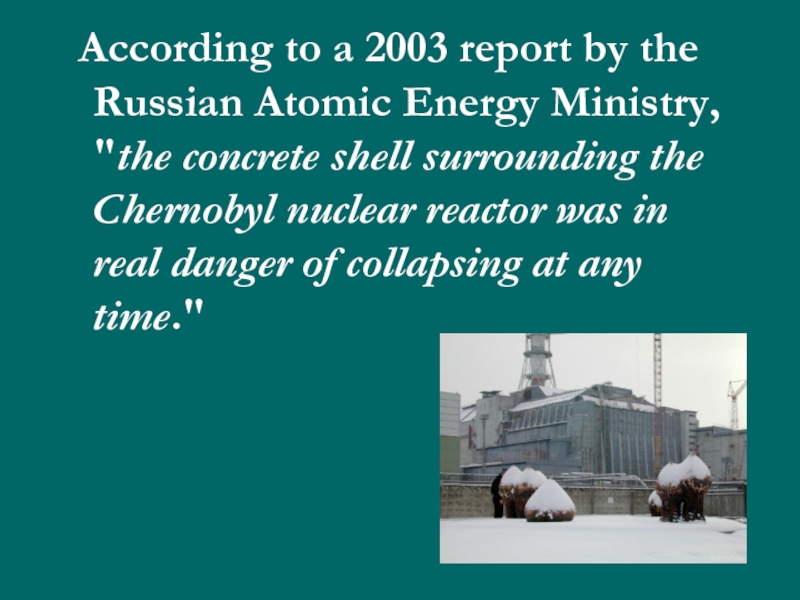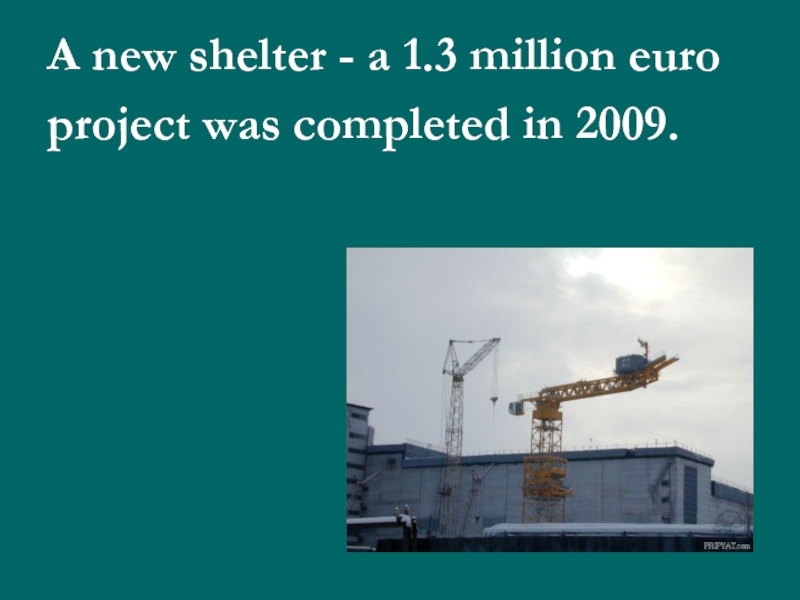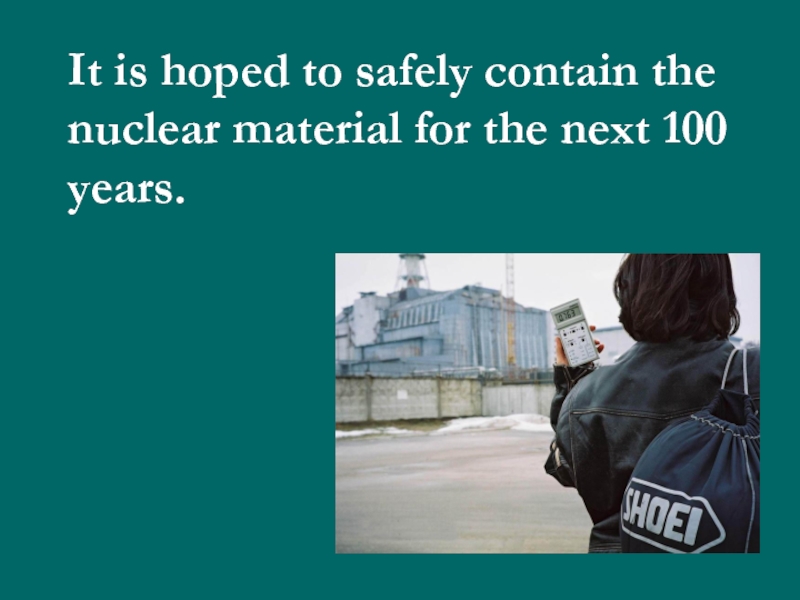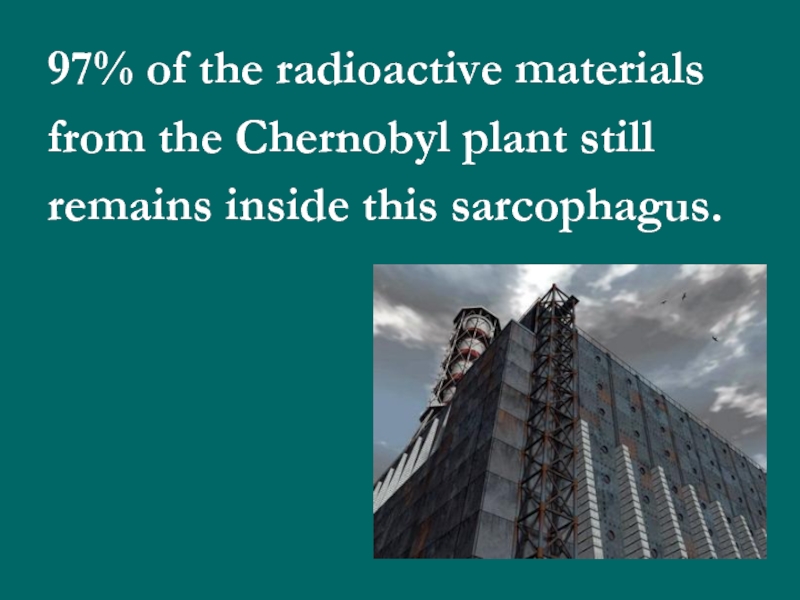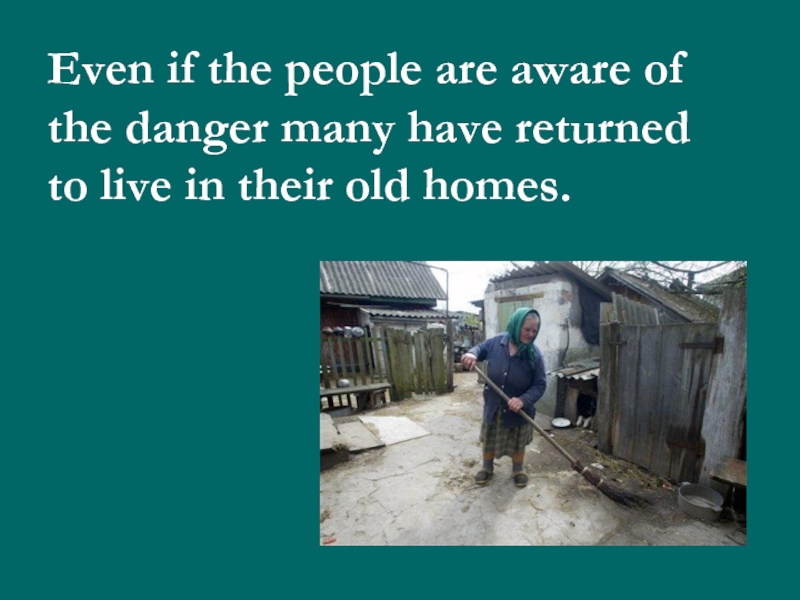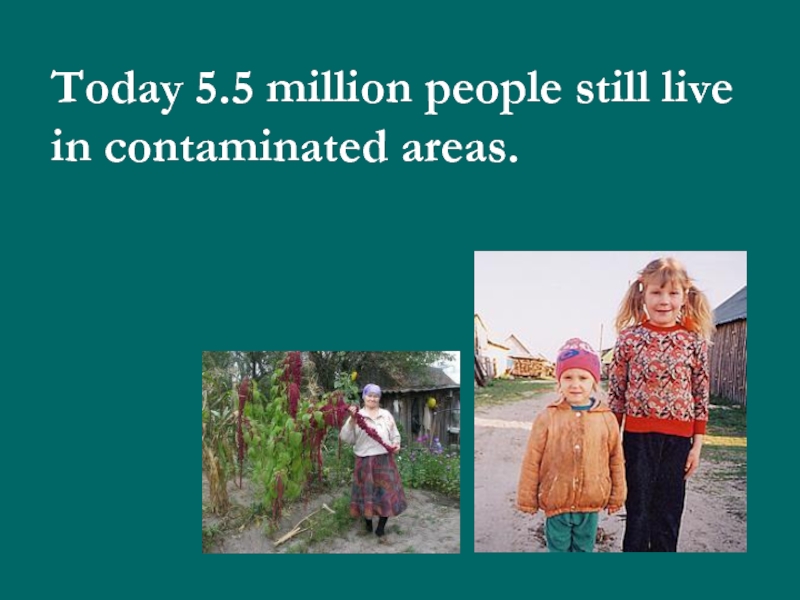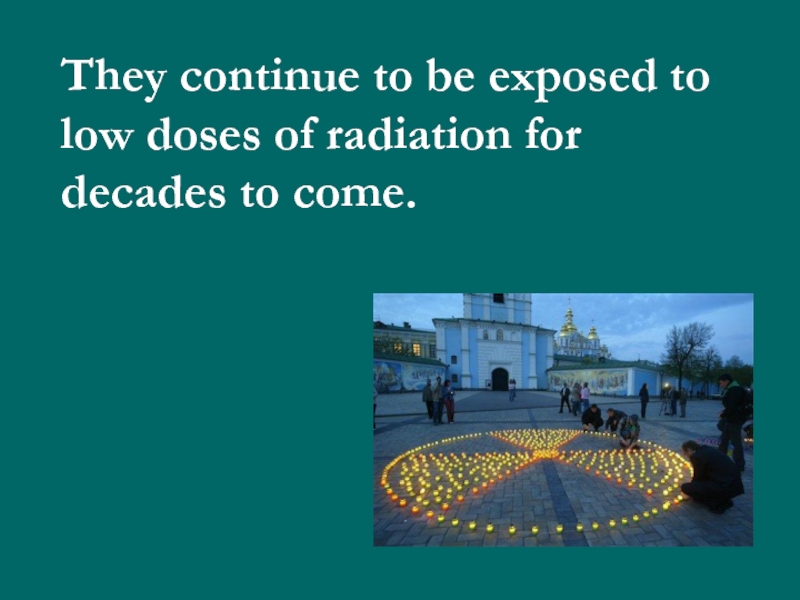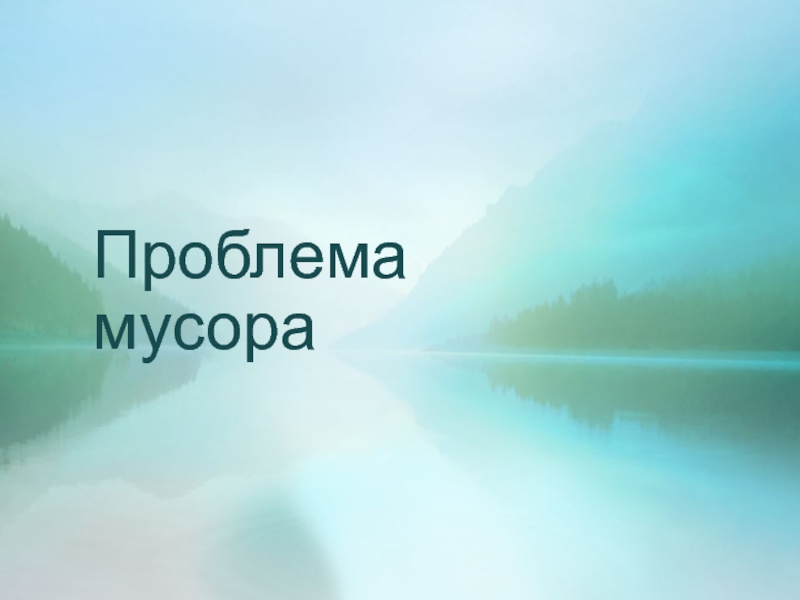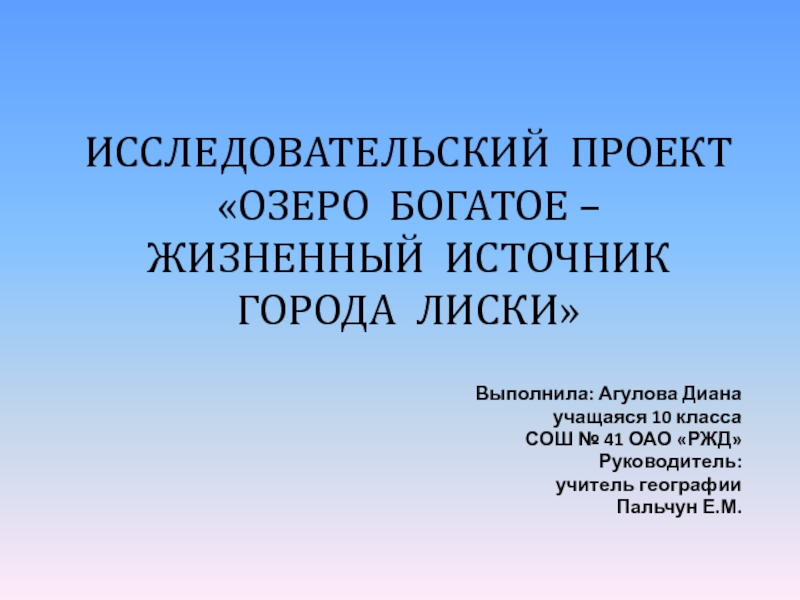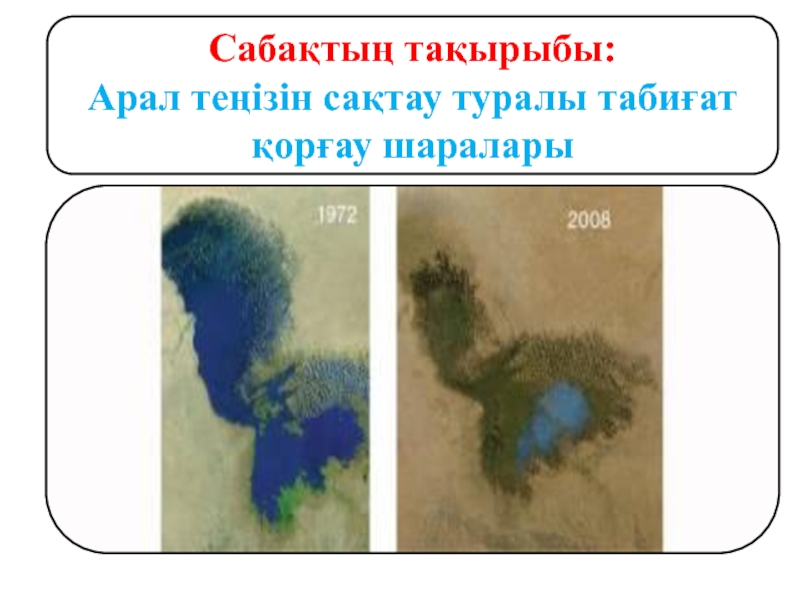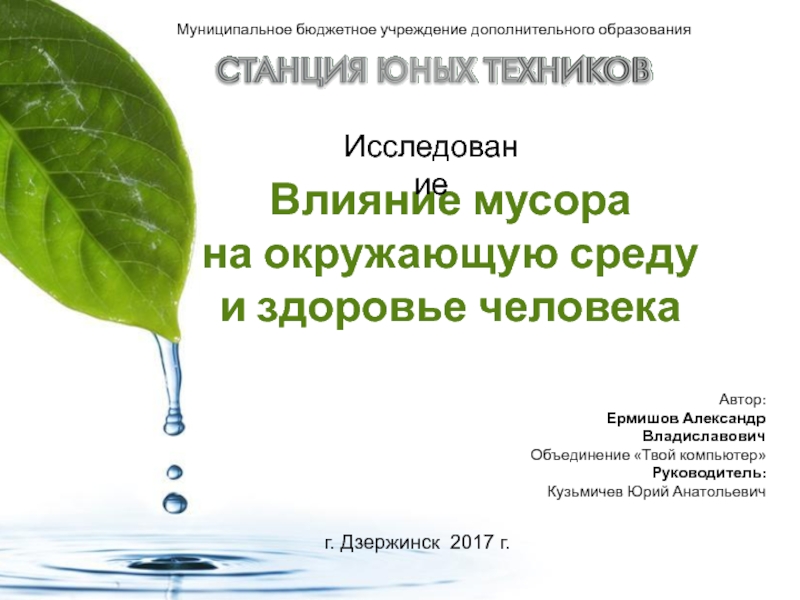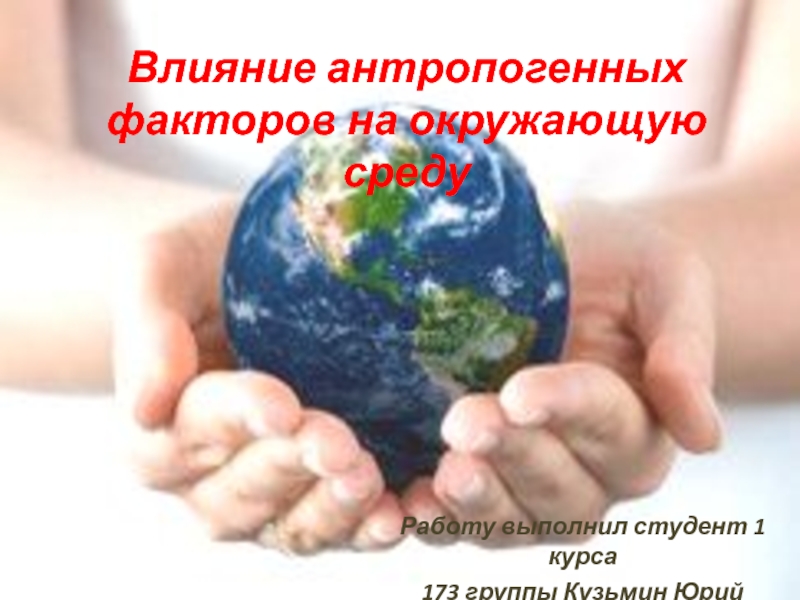- Главная
- Разное
- Дизайн
- Бизнес и предпринимательство
- Аналитика
- Образование
- Развлечения
- Красота и здоровье
- Финансы
- Государство
- Путешествия
- Спорт
- Недвижимость
- Армия
- Графика
- Культурология
- Еда и кулинария
- Лингвистика
- Английский язык
- Астрономия
- Алгебра
- Биология
- География
- Детские презентации
- Информатика
- История
- Литература
- Маркетинг
- Математика
- Медицина
- Менеджмент
- Музыка
- МХК
- Немецкий язык
- ОБЖ
- Обществознание
- Окружающий мир
- Педагогика
- Русский язык
- Технология
- Физика
- Философия
- Химия
- Шаблоны, картинки для презентаций
- Экология
- Экономика
- Юриспруденция
Chernobyl disaster. The worst man-made disaster in human history презентация
Содержание
- 1. Chernobyl disaster. The worst man-made disaster in human history
- 2. The nuclear power station
- 3. Chernobyl is located on the border area between Ukraine and Belarus.
- 4. Chernobyl
- 5. The Chornobyl nuclear power station was built in 1978-1979.
- 8. The Explosion
- 9. In the early morning hours of 26
- 13. Radioactive fallout
- 14. The explosion released 190 tons of radioactive gases into the atmosphere.
- 16. Radioactive fallout scattered over much of the northern hemisphere via wind and storm patterns.
- 17. 70% of the radioactive material was blown into the neighboring country of Belarus.
- 18. In all 150,000 square kilometres in Belarus, Russia and Ukraine were contaminated.
- 19. 7 million people living in these areas were exposed to the radiation fallout.
- 20. The evacuation
- 21. The morning after the explosion, there was no hint of a disaster.
- 22. Children went to school and played outside.
- 23. Gardeners worked on their plots outdoors.
- 24. Even weddings took place that Saturday night.
- 25. Only on the second day after the
- 26. In total some 200,0000 people are believed
- 27. 3 million of those evacuated were children.
- 29. The Human Casualties
- 30. The immediate impact
- 31. The immediate casualties were operators, rescue workers,
- 32. 31 emergency clean-up people workers died in 3 months of radiation poisoning.
- 33. 134 emergency workers suffered from acute radiation sickness.
- 34. 25,000 of the rescue workers later died from diseases caused by radiation.
- 35. Diseases caused by radiation included: - lung
- 36. Long term exposure
- 37. Eight years after the accident 8,000 people had died from diseases due to radiation.
- 38. To date medical statistics reported 270,000 cancers (mostly thyroid) caused by the Chernobyl disaster.
- 39. Of these 93,000 of these cancer cases were fatal.
- 40. There have been at least 1800 documented cases of thyroid cancer in children.
- 41. In region of Belarus, incidence of leukemia has increased 50% in children and adults.
- 42. Maternal exposure to radiation caused an increased
- 43. Environmental Impact
- 44. Areas still impacted today: - soil - water air crops and food livestock
- 45. 20% of prime farmland in Belarus remains contaminated from the decaying components of plutonium.
- 46. Radiation is concentrated in sediments at the bottoms of lakes and ponds.
- 47. Still the population continues to contaminate itself by fishing there.
- 48. Livestock such as cattle and goats accumulate radioactivity in their meat and milk.
- 49. The food and water supply is continuously
- 50. Problems Today
- 51. After the disaster, a huge cement box
- 52. According to a 2003 report
- 53. A new shelter - a 1.3 million euro project was completed in 2009.
- 54. It is hoped to safely contain the nuclear material for the next 100 years.
- 55. 97% of the radioactive materials from the Chernobyl plant still remains inside this sarcophagus.
- 56. Even if the people are aware of
- 57. Today 5.5 million people still live in contaminated areas.
- 58. They continue to be exposed to low doses of radiation for decades to come.
Слайд 9In the early morning hours of 26 April 1986, a testing
error caused an explosion at the Chernobyl nuclear power station.
Слайд 16Radioactive fallout scattered over much of the northern hemisphere via wind
and storm patterns.
Слайд 25Only on the second day after the disaster (after 36 hours)
did the Soviet authorities start evacuating people from the area around Chernobyl.
Слайд 26In total some 200,0000 people are believed to have been relocated
as a result of the accident.
Слайд 31The immediate casualties were operators, rescue workers, firefighters and soldiers involved
in the clean up operations.
Слайд 38To date medical statistics reported 270,000 cancers (mostly thyroid) caused by
the Chernobyl disaster.
Слайд 42Maternal exposure to radiation caused an increased rate of:
- birth
defects,
- miscarriages,
- and stillbirths
- miscarriages,
- and stillbirths
Слайд 4520% of prime farmland in Belarus
remains contaminated from the
decaying components of
plutonium.
Слайд 49The food and water supply is
continuously contaminated by
rainfall and by the
movement of
radioactive dust.
radioactive dust.
Слайд 51After the disaster, a huge cement box (sarcophagus) was hastily built
around the radioactive material.
Слайд 52
According to a 2003 report by the Russian Atomic Energy
Ministry, "the concrete shell surrounding the Chernobyl nuclear reactor was in real danger of collapsing at any time."
Слайд 5597% of the radioactive materials
from the Chernobyl plant still
remains inside this
sarcophagus.

